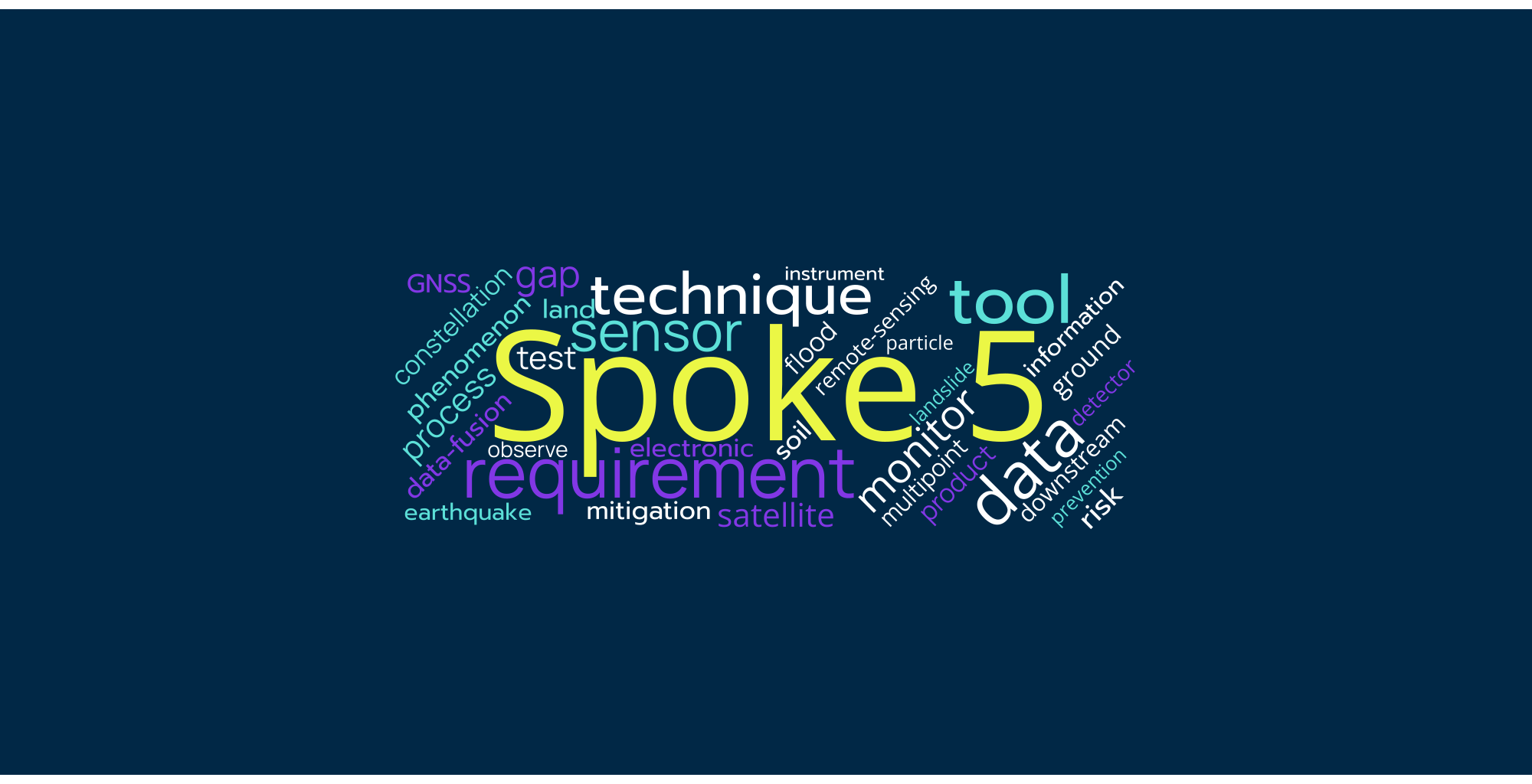Spoke 5 activities overview
Spoke 5 - Planetary protection and geohazards mitigation
Spoke 5 is dedicated to advancing the technologies, methodologies and services that underpin next-generation Earth Observation (EO) systems for geohazard monitoring, climate-change adaptation and environmental protection. Its activities range from gap analyses of current EO capabilities to the development of innovative sensors, data-processing methods, and future service concepts. The Spoke integrates upstream technology development and downstream data exploitation, ensuring that new EO solutions respond directly to societal needs and scientific challenges.
A first area of activity focuses on assessing the current state of EO systems. Through a structured upstream gap analysis, Spoke 5 reviews existing ground and satellite data, evaluates their ability to support applications such as earthquake monitoring, volcanic activity tracking, landslide identification, fire detection, floods, droughts and storm surges, and analyses planned EO multipoint constellations. This process identifies the distance between current capabilities and desired outcomes, highlighting gaps in data quality, resolution, latency, accessibility and coverage. On this basis, the Spoke defines the initial requirements for future nanosatellite constellations designed specifically to address multi-risk scenarios.
Building on this foundation, the Spoke develops innovative technologies for multipoint remote sensing. These efforts include miniaturised instruments for electric-field, plasma and low-energy particle measurements; multispectral and hyperspectral optical sensors; environmental sensing systems based on signals of opportunity; and compact particle detectors. Advanced on-board processing architectures are also explored to enable quasi-real-time data handling and AI-enhanced analysis directly in orbit. These technologies undergo breadboard development and testing to achieve higher Technology Readiness Levels (TRL) using both existing facilities and new qualification infrastructures.
Complementing upstream technologies, Spoke 5 conducts a downstream gap analysis to identify how physical modelling, numerical simulation, data assimilation and AI can be integrated to improve the interpretation of EO big data. The Spoke reviews the state of the art in physics-based and AI-based analysis tools, multisensor data-fusion techniques and cross-database exploitation. The outcomes of this review guide the definition of requirements for next-generation downstream processing, ensuring coherence between sensor development, data exploitation and service design.
A further component focuses on developing new downstream methodologies for interpreting complex EO datasets. Activities explore AI techniques for multitemporal and multimodal analysis, remote-sensing methods for monitoring soil and land parameters linked to floods and fires, advanced approaches for geodetic and ground-motion measurements, and techniques for observing rapid-evolution phenomena such as mudslides, tsunamis or volcanic unrest. The Spoke also advances modelling frameworks that integrate multiparametric data from Earth-observation and ground-based systems to support early warning and risk mitigation.
To sustain the technological and methodological activities, the Spoke includes a dedicated work package on procurement and external services, which coordinates the acquisition of instruments, infrastructures and services needed across the consortium. This ensures timely support to research activities and the establishment of service agreements with external institutions.
Finally, Spoke 5 explores future trends and services in EO by analysing emerging technologies, market signals, user needs and scientific developments. These activities outline the steps needed to translate the upstream and downstream results of the Spoke into advanced EO-based services dedicated to environmental protection and geohazard damage mitigation.
Keyword Cloud of Spoke Activities




